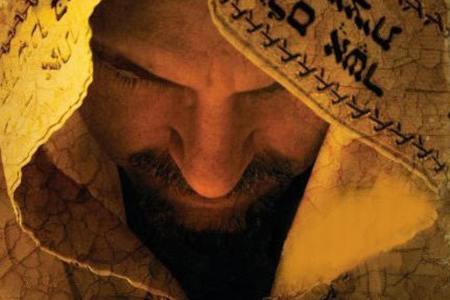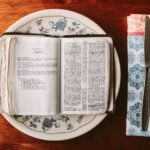 Over at Living Church, the US Episcopal Church website, they have been hosting a discussion about liturgy and unity prompted by the prospect of revision of the 1979 Prayer Book. Andrew Pearson, dean of the Cathedral Church of the Advent, Birmingham, Alabama, questions whether doctrinal unity (such as it is) should be maintained through notional commitment to a common form of liturgy—of whether the diversity of the Church should be recognised in diverse use of different liturgies.
Over at Living Church, the US Episcopal Church website, they have been hosting a discussion about liturgy and unity prompted by the prospect of revision of the 1979 Prayer Book. Andrew Pearson, dean of the Cathedral Church of the Advent, Birmingham, Alabama, questions whether doctrinal unity (such as it is) should be maintained through notional commitment to a common form of liturgy—of whether the diversity of the Church should be recognised in diverse use of different liturgies.
In our context, we have elected to use the eucharistic prayer from the 1662 Book of Common Prayer, which has no epiclesis. As a congregation that identifies itself as Protestant and evangelical, this was a welcome change, a change that places our congregation with the majority of Anglican Communion…
The issue is not one of liturgy, but doctrine. Because we do not have an agreed upon doctrine, we have varied liturgical practices in our church. The Articles of Religion relegated to “Historical Documents” still have a place in articulating Anglican doctrine. That being the case, it seems (in the words of Dean Michell) that nearly every Episcopal ordinand must have “their fingers crossed” when the word doctrine is uttered in the ordination service.
What if doctrine and liturgy are in conflict, as they are in our church? What is the authority that we appeal to? Bishops? Canons? Convention resolutions? The Bible?
Diversity in liturgy is the reality of our Anglican Communion. One need only look at the rest of the Communion to see that liturgical conformity emanates only from North America. The Church of England has a wide range of liturgical diversity on Sunday mornings. From Pusey House to All Souls, Langham Place, to Westminster Abbey to Southwark Cathedral, you will see it all. And, most likely, you will find the 1662 Book of Common Prayer Holy Communion service being used only at 7:30 a.m., if at all.
I was invited to contribute a response from the perspective of the Church of England, and this is what I offered.
What do you do with a diverse church which is supposed to have Common Prayer? Is it better to change the Prayer to become as diverse as the reality on the ground, or should we try and police the reality in order to make it conform to the commonality of the forms of prayer? Or is there a third possibility?
Andrew Pearson is right to observe not only the diversity of liturgical practice in the Anglican Communion but also the diversity in the Church of England itself. I am quite convinced that the ecumenical challenge we face here is less to do with our relations with other churches, and more to do with our relationships with one another. There is, arguably, more diversity in the C of E than any other member of the Communion, with influences not only from both the Oxford Movement and radical liberalism from the past, but also from the New Calvinism and the Vineyard movement in more recent years. It would be impossible to enforce precise uniformity of practice across these theological traditions in the Church, but abandoning the idea of a form of common prayer would be even more disastrous. The different elements would spin off in their own direction without any hope of shared commitments.
And those shared commitments do exist and do indeed bear fruit. In examining one of the theological colleges, I have just read about a fresh expression of church, influenced by Vineyard, breathing new life into a struggling church from the Oxford Movement tradition. And low church student ministries are realising the attraction to young people of ritual and liturgy in providing stability and sanctuary in a changing world. Unless you have Common Prayer, you do not have a basis for conversation. Our liturgy (along with our canons) actually specifies what we believe, and forms the basis for discussion about both diversity and change. There is a common commitment even if this does not lead to uniformity of practice.
I am not convinced that Common Worship offered the best direction for this. We now have about a million different texts to which we are supposed to adhere without deviation; it would have been a better strategy to offer a smaller number of core texts which are used with acknowledged flexibility, which is what happens in practice. But without a common liturgical centre, we have no shared point of reference in discussing our points of difference.
There is, of course, a price to pay for this way of living together in the process of revision of common prayer. For us, it hijacked what was supposed to be a Decade of Evangelism and replaced it with a Decade of Liturgical Revision. Some of the conversation was painful as we engaged with a wide range of concerns. And we insisted on continuity, for the sake of both historical integrity and ecclesial unity: all modern liturgy is strictly an alternative to the 1662 BCP which remains our official liturgy. And it means that every tradition in the church has to take seriously the process of revision and be fully involved to be fully represented.
But despite the challenges, we think this has been a price worth paying to express our shared beliefs in common prayer.
Do you?
Follow me on Twitter @psephizo. Like my page on Facebook.
Much of my work is done on a freelance basis. If you have valued this post, would you consider donating £1.20 a month to support the production of this blog?




























I am not sure you are correct in saying that we have about a million texts to which we are supposed to adhere without deviation.
I think that our Common Prayer and Worship Books across the Anglican Communion are ingenious. They don’t require us to subscribe to all theologies reflected in all the liturgies. The choices give us the freedom to be different.
In the Second Order for Holy Communion in A Prayer Book for Australia there are five given thanksgiving prayers, each reflecting different theologies of communion. Some I will never use in public worship, yet these are used regularly by others.
The Diocese of Sydney, reflecting the New Calvinism, as you call it, requires any priest wishing to use that Prayer Book to get Episcopal permission to do so. They prefer the earlier edition called An Australian Prayer Book. I don’t like that kind of mind control but even in that earlier Prayer Book there are forms that I am more than happy to use.
Ian, I am a very firm believer in the importance of [something like] Common Prayer for the AC — not (you won’t be surprised to hear) because I support an Act ofUniformity that would require everyone to adhere to exactly the same liturgy, turning aside neither to the right nor to the left, but because we need a point of orientation by which we may measure the degree of our turning. This the BCP provided brilliantly for centuries, such that most more-or-less mainstream CoE congregations did something more or less like the Prayerbook liturgy, so that boundary stretching departures in some instances, and the oddball sort of mad vicar who invented everything anew for himself could be endured. The keel of the BCP kept the larger boat on track.
Once one begins to devise licit liturgies tailored to distinct churchmanships, we lost the gravitational force of the BCP, and now ‘departures’ are departures from an agreed norm that is itself a deprature from the centre, and the whole enterprise goes wobbly.
Hi Ian,
Interesting! We have Common Worship booklets at our church, and the Collect is also written on the pew leaflets, so we say that together. A few people have expressed a preference for the 1662 BCP, which they describe as ‘the black book’. At one time ‘the black book’ was used once a month at one of the three weekly services in our church, but I don’t think it is in current use – I need to check!
Christine
Hi Ian,
This is of particular interest to me because, a couple of days ago, I set up a FB Group, https://www.facebook.com/groups/1855884327972855/. The devotions posted here are based on the Daily Office.
I suppose that the challenge thrown up by Common Worship is similar to the issue of bible translation. In other words, given the vast range of Bible versions and their impact on interpretation, should the CofE become definitive on which translations can be used in public church?
You rightly explain the futility of a prescriptive approach to Common Worship. In most cases, what’s provided will either be adapted or ignored. This is not completely at odds with the stated aim of the BCP,, namely: ‘Our general aim therefore in this undertaking was, not to gratify this or that party in any their unreasonable demands; but to do that, which to our best understandings we conceived might most tend to the preservation of Peace and Unity in the Church; the procuring of Reverence, and exciting of Piety and Devotion in the Publick Worship of God; and the cutting off occasion from them that seek occasion of cavil or quarrel against the Liturgy of the Church.
So, when we focus on such a worthy aim, it transcends the diversity of worship styles in the following ways:
1. Common worship establishes an authoritative consensus about what is approved as needful and good in the judgement of the entire church. Richard Hooker explained this by saying: ‘When we publicly make our prayers, it cannot be but that we do it with much more comfort than in private, for that the things we ask publicly are approved as needful and good in the judgement of all, we hear them sought for and desired with common consent.’
So, while St. Paul encouraged churches to accommodate diversity on certain peripheral issues and externalisms (Rom. 14), he was fairly clear on what we should all pray for, e.g. those in authority (1 Tim. 2:1) and for the spread of the gospel and the safety of those involved in missionary endeavours (2 Thess. 3:1) His prayer priorities were, of course, derived from Jesus, as exemplified by in the Lord’s prayer.
The corollary of Anglicanism remains: Lex orandi, lex credendi (“the law of praying [is] the law of believing”). That’s why, whatever is practiced ‘on the ground’, the approved liturgy cannot accommodate every shade of belief. As with the Elizabethan Settlement, the BCP represents and should be understood as a compromise aimed at maintaining Peace and Unity. It’s what we can either endorse, or, at least, what we can live with, wherever else our various traditions might disagree.
Despite this, I can see no reason why Common Worship could not focus on maintaining just the common focal points of worship, thanksgiving, petition and the Lectionary sequence, while highlighting that, other than scripture, the form of written prayers are for guidance and not prescriptive.
I would particularly note from the Preface to the BCP, that one of the main purposes of its amendment was for the more proper expressing of some words or phrases of ancient usage in terms more suitable to the language of the present times, and the clearer explanation of some other words and phrases, that were either of doubtful signification, or otherwise liable to misconstruction problems that it sought to address
If development of English language has caused much of the wording of Common Worship to lapse into desuetude, there is a need for further amendments that will ensure that it is understood by all. As St. Paul put it: ‘But in a church meeting I would rather speak five understandable words to help others than ten thousand words in an unknown language. (1 Cor. 14:19)
When i arrived at my current church I was presented with a service book made up by my predecessor. It was a communion service but had little from CW and was in that sense illegal. I spoke to a number of the clergy who had conducted services during the vacancy and they felt most unhappy about using it.
Bishop Mark Sowerby makes the point about the unity that has been lost since the use of BCP has largely disappeared. Previous generations had this as anchor of unity which we have now lost.
The CW Service of The Word is so loose more or less anything goes although if memory serves me scripture and a collect are essental. I don’t think we should be straight jacketed but the comment I heard from one quarter was “Our vicar has been tarined, why shouldn’t he make up his own liturgy” Anarchy rules!
For me, CW was one of the best developments in CofE for a very long time, especially as it was founded on a lengthy process of experiment and experience. My first encounter was when Canon Jasper was associated with St Barnabas in Dulwich when I was a teenager and he was working out what liturgy for a modern age might look like. (Of course, his modern age was very different from what we experience today!)
The success of CW lies inherently in not only being very inclusive, with many options, but also offering a sense of coherence. When spending time on the canals, we rarely visit another church that does not feel authentically Anglican yet we have found so much variety.
In systems terms, a Requisite Variety is essential for any organism to survive in the long term as it adapts to varying circumstances but still remaining the same being. We always need to be aware that we do not – indeed cannot – know all that there is to know about God and what he expects from us. The same applies to forms of worship.
At the moment, I am especially exercised by what I would call ‘Minimalist Liturgy’ – what is it that, after stripping away all the ‘decorative material’ – some of which may still be of help in focussing collective worship – that still leaves us with authentic Anglican worship but which enables us to experience the essential without distraction. At the same time, what is the simplest form that we can use that makes the transition from outside to inside as realistic as possible for those with no background in Christian or Anglican worship. (Alas, too many long standing worshippers seem to have nothing more than familiarity to offer about why they do what they do!) I recall that we are instructed to put no unnecessary obstacles in the way of belief in Jesus as saviour.
I should also say that, influenced a long time ago by John Robinson’s Liturgy Coming To Life, I am interested in an holistic liturgy that unites all senses, sound, movement, context etc etc as well as just the words. Too often we concentrate on one at the expense of all others. For many, arguing in detail about individual words cannot be more irrelevant!
A man at our fellowship meeting at church today mentioned the Book of Common Prayer. He told us a story from a child’s point of view. He said that he remembered sitting in church in 1969 not long after Concorde made its first flight. He was twelve at the time and was amazed to read in the BCP that the Queen loved concord – he was very impressed at how up-to-date that little book was 🙂
Brothers and sisters. An agreed norm like the Book of the Common Prayer can’t be the Centre in our faith of Jesus Christ because the Centre must be the Yeshua Messiah only. Isn’t it making sense? I love the preacher like John Buryan. Do you?